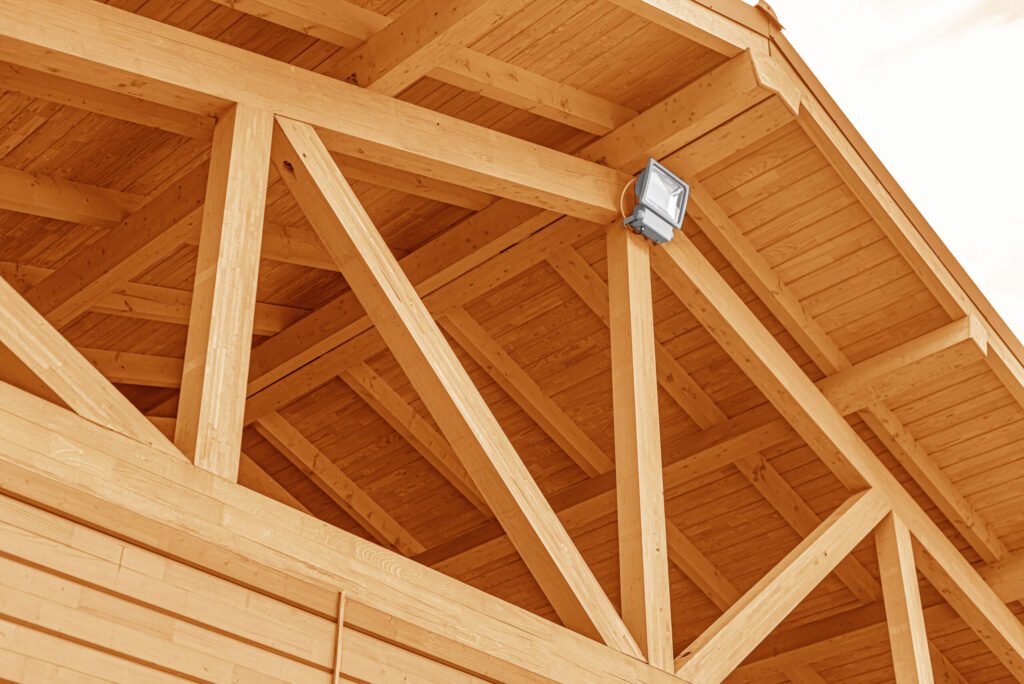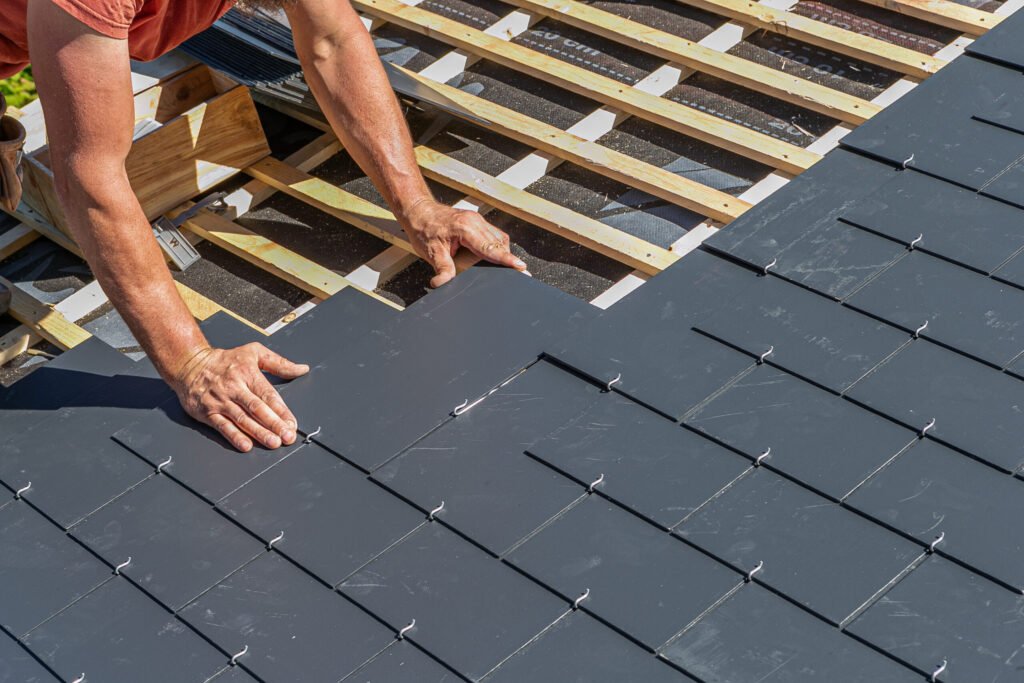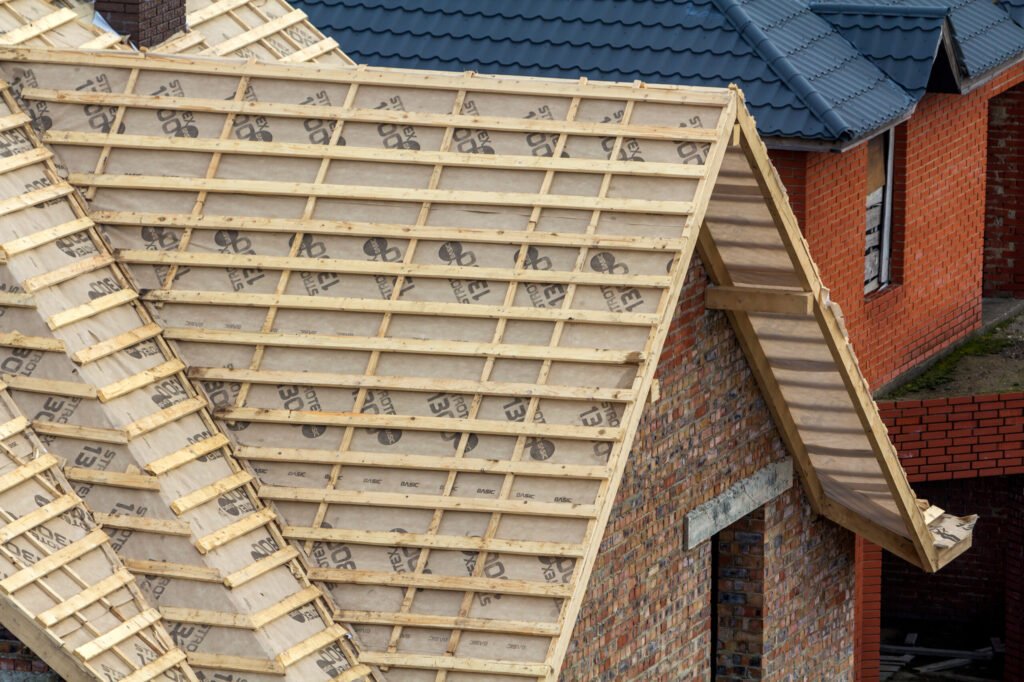Asking how long you can expect your roof to live is a valid question. As a homeowner, you want to know when your existing roof will fail to protect your indoor space against the elements. You don’t want roof repairs or a roof replacement to take you by surprise. Not to mention, you want to extend the roof’s lifespan.
If you’re yet to install a roof or are worried your roof is falling apart, contact us immediately. At Heritage Exteriors, our building contractors will offer you the roof replacement services you need.
The Average Roof Lifespan
How long does a roof last? The average lifespan of a roof is 15 to 25 years, which is a relatively long duration. However, it depends on the roofing materials and other factors, which we’ll get into.
Understanding how different variables impact your roof’s lifespan will help you make the most out of your investment. And learning about the signs of damage will help you assess your roof’s condition and how long it’ll last.
The Factors Affecting Roof Life Expectancy
The following factor will help you estimate your roof life expectancy, extend it, and decide when replacement (rather than repair) is the right move.
Roofing Materials
The main determinant in this equation is the type of roofing material used. Let’s go over each roofing material and type to understand its lifespan.
Asphalt Roof
An asphalt shingle roof lasts 15 to 30 years. Asphalt shingle roofs are the most widespread roof types, as you’ll find them on over 80% of new houses. The Study of Life Expectancy of Home Components estimates the life expectancy of an asphalt shingle roof to be 20 years; their warranties are up to 25 years.
Standard asphalt shingles contain a base of fiberglass or organic material (like cellulose) coated with asphalt. They feature a black underside, which activates under heat exposure, sealing the roof in place and protecting it against the elements. They offer you some protection against UV rays, rain, and wind.
Naturally, cheap asphalt shingles live for 15 to 20 years. These budget-friendly options are called three-tab asphalt shingles because they feature three tabs on the lower edge of each strip, which look like three separate shingles. And they give you the most popular type of asphalt roofs. However, they aren’t made of durable materials and offer you insufficient protection.
As for architectural asphalt shingles, they can live up to 25 years. They’re similar to the first type of asphalt shingles but are more fancy, attractive, and durable.
Architectural shingles have triple the density of asphalt. Their multiple laminated layers give them a more dimensional and visually interesting layered design. The dimensional shingles emulate the appearance of wood, tile, and slate roofs (despite being much less expensive).
Finally, premium shingles give you the most durable type of asphalt shingle roof. They can last up to 30 years, and their warranties testify to their durability! They withstand high levels of wind uplift.
Wood Roof

Wood shingles last up to 30 years, but they can only live that long with intense care. Otherwise, mold, mildew, termites, and fires will damage them prematurely.
Another point is that wood shingles experience discoloration over time, as their brown color turns into a silvery gray.
Your wood roof may be made from cedar, pine, or spruce. Cedar is typically the go-to material because it protects you against insects and rotting.
Metal Roof
A metal roof may be made of copper, zinc, or other excellent materials, and it involves expensive installation processes. So, it comes as no surprise that metal roofing lasts 50 years or a lifetime.
As for standing seam metal roofs, they last up to 50 years. Stone-coated metal tiles last from 30 to 50 years. Other less durable metal roofs consist of ribbed panels, so they last 25 to 40 years.
The reason there are such differences in the average lifespan of a metal roof is the thickness of the (typically aluminum or steel) panels. After all, the lower the gauge is, the thicker the panel and the longer the lifespan is.
If a metal roof has a low gauge, it must have thick panels and high durability. These have gauges 22 to 24, and they offer 50 or more years of protection. In the case of high gauge and less thickness, you can’t expect yours to be a very resilient roof. These gauge metal roofs (25 to 29) live 20 to 25 years.
Clay Roof
According to NAHB, clay tile lasts 50 or more years, and its warranty starts at 30 years.
Clay tiles reflect sunlight and withstand fire and harsh weather conditions, offering your house protection for ages. They also require minimal routine maintenance and are easy to fix if needed. But because of these, clay tiles are considered a big investment.
Despite their name, clay tiles nowadays are usually made from tinted concrete. Manufacturers mold this concrete in flat, curved, and interlocking styles. The durability and aesthetic appeal explain why clay tile roofs enjoy such popularity in the Southwest on Spanish-style homes.
Concrete Roof
Concrete tiles are incredibly sturdy, thanks to their water, cement, and sand content. Like clay, you can expect them to last 50 or more years, but the good news is that they aren’t as expensive.
Concrete tile roofs are flat, low-profile (slightly curved), or high-profile (highly curved). Their versatile looks make them resemble stone, wood, and clay.
Slate Roof

If you’re looking for the highest roof life expectancy, a slate tile roof lasts 50 to 100 years. So, it comes with superior durability. Understandably, it’s on the high-end of roof prices. If you can afford slate tiles, think of it as an upfront investment that gives you stable and protective roofing for a lifetime with minimal maintenance.
The reason behind their lifespan is that slate tile roofs are made of a natural metamorphic stone, such as clay or volcanic ash. They have a refined grain texture.
Slate shingles are weather-resistant (as long as no violent tornadoes are involved). They’re also fireproof and eco-friendly. And so they can resist heat, moisture, and snow, which is great news for Midwestern homeowners.
Ventilation
With proper ventilation, roof shingles can have an extended life expectancy. That’s because it helps them maintain a consistent temperature and avoid cracking or splitting under pressure.
So, how do you recognize poor roof ventilation? You can look for the following signs:
- Moisture in the attic
- Ice dams in cold weather conditions
- Unregulated indoor temperature
- Peeling paint and sagging ceilings inside your home
- Deteriorating shingles, soffit, decking, or fascia on your home’s exterior
Climate
Your location and its climate impact the lifespan of a roof because they tell you about the conditions it’ll face.
For instance, extreme temperatures, heat waves, snowstorms, sun exposure, wind, storms, hail, and moisture can lead to roof damage. Think of moisture buildup, mold and mildew growth, leakage, and more. Of course, natural disasters, including hurricanes, fires, and tornadoes, require immediate roof replacement.
So, consider your area’s climate to determine which roofing materials best accommodate it if you want to extend your roof’s life expectancy. If it’s humid, you might want reflective metal. Otherwise, your overheated shingles might crack. If it’s cold, asphalt or wood shingles will do you good.
Installation
The quality of the roof installation process can make all the difference. You may choose to DIY it, which works with some roofing materials. Still, its quality might be questionable.
Even when you work with a professional roofing company, you should assess the expertise of the roofers. They should employ the latest technologies and have expertise, impressive handiwork, attention to detail, and time-tested processes to protect your roof’s lifespan.
On the flip side, if you hire unqualified roofers, you might notice the following prematurely:
- Shingle damage
- Missing shingles
- Mismatched shingles
- Unprofessional nailing
- Missing underlayment
- Roof nails
- Sagging rooflines
- Roof stains
- No drip edge
- Not new flashing
Underlayment

Roof underlayment is the layer between shingles and the roof sheathing or deck. As a waterproof component, it protects your roof’s interior in case of exterior damage, preventing moisture, mold, and rot. Without it, you can expect a roof repair to come your way sooner than usual.
Quality
Aside from the type of roofing material, it matters whether you use quality materials.
Let’s say you want an asphalt roof. Are you getting three-tab asphalt shingles, architectural shingles, or premium ones? If it’s the former, low-quality materials come with a short lifespan.
The mid-tier is a bit better. As for expensive roofing materials, they’re worth the hefty upfront costs.
Maintenance
If you want your roof to last longer, regular maintenance is key. That includes cleaning your ventilation system, removing algae, annual roof inspections, roof repair when you identify damage, and even pruning surrounding trees.
If tree branches are close enough to rub your roof shingles during high winds, cut these branches. This way, they won’t puncture the shingle roof. Also, get rid of leaves and debris in your gutters with each season.
Naturally, different roofing materials require varying levels of maintenance. For example, clay and slate roofing are easy to maintain, but wood shakes require intense care.
Roof Age
When you purchase or move into a house, how long has the roofing been standing?
If it isn’t a new roof, its age will help you predict the right time for a roof replacement. This knowledge can help you decide if you should fix and replace any damaged shingles or if you should get a full-on roof replacement (depending on the more financially sound choice).
Color
Believe it or not, roof color can shorten or elongate its life. So, which colors make a roof last longer?
Light colors have that effect, especially in hot climates. In comparison, dark colors absorb heat more, raising the temperature of the shingles and causing more wear and tear.
Slope
The more sloped a roof is, the easier it’ll be for water to slide off its surface. This good drainage protects your roofing membrane.
Unlike sloped roofs, flat roofs and roofs with a low slant are more prone to water pooling, which causes mold and fungus infections, roof leaks, and other forms of moisture damage.
How Do You Know When a Roof Needs Replacing?
To identify when your roofing system needs replacing, look out for the following signs of damage:
- Cracked or chipped roof shingles
- Curling roof shingles
- Split wood shakes
- Mold or algae
- Leaks and water stains in the attic
- Missing shingles
- Discoloration or rust
- Ridges and dips
If you notice any of those signs, you should call a local roofing contractor immediately to assess the damage and devise a repair or replacement plan.
Final Thoughts
Overall, roofs last 15 to 25 years on average, but they can live up to 100 years! Roof materials have varying lifespans, and that’s only scratching the surface of what plays into their lifespan. If you’re installing a new roof, understanding these factors will help you make an informed choice. If not, you can use them to elongate its lifespan and plan for its replacement.
Finally, when it’s time for a repair or replacement, our roofing contractors at Heritage Exteriors will be ready to help. We’re committed to quality work and excellent service and work with insurance companies closely to get you the best roof for the best price. Email us, call 320-796-5001, or use the online form for a free estimate!

